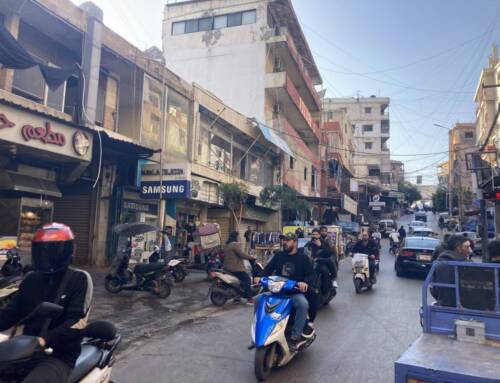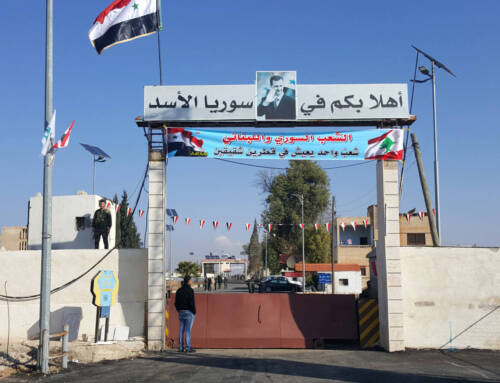UNHCR’s Harper: Syrian refugee crisis is international problem
December 12, 2013 In this second installment of a two-part […]
12 December 2013
December 12, 2013

“The last thing Jordan wants is to have a repeat of the Palestinian camps,” Harper says, stressing that the Syrian refugee crisis is the responsibility of the entire international community, not just host countries such as Jordan.
Harper spoke to Syria Direct’s Gioia Forster about the challenges involved in bringing about sustainable support for Jordan “on the back of the refugee crisis.”
Part one of the interview is here.
Q: Do you anticipate a point at which Jordan just cannot take any more, when host communities will be overwhelmed, international funding decreases? What happens then?
A: Any country in the world would put its sovereignty and stability first – that is a given. So what we have to do is to try and mitigate the costs on Jordan of the Syrian refugees so its sovereignty and stability are not put at risk.
Q: Would you say the UNHCR response to the Syrian refugee situation in Jordan has gone from an emergency to a more long-term response?
A: There is a limit to how much we can get engaged but what we are trying to do is engage other actors to come on board.
Q: The expectation is that the refugees will be in Jordan for a long time. It is difficult to predict the development of the crisis, but if the fighting in Syria ended tomorrow, what scenario would you predict?
A: I would imagine that, given that the vast majority of refugees come from Daraa, the vast majority would go back. I do not think anyone would want to stay in Zaatari a day longer than is absolutely necessary. So I would want a change from a refugee response to a return-and-reintegration response within 72 hours.
You could move caravans back: the government has agreed that the basic infrastructure which is in the camp could go into Syria to support their return and reintegration. Again, the sooner we get rid of Zaatari the better.
The last thing Jordan wants is to have a repeat of the Palestinian camps. So we have established the camp in a way in which we could also dismantle it as soon as we possibly could.
Q: The press largely covers Zaatari camp, but most of the Syrian refugee population in Jordan is living in host communities. How does UNHCR support them and what are the different challenges compared to running Zaatari?
A: Well Zaatari is big, but we know where everyone is. If you are in the camp, you can go and see people – you can provide them with the water, food, electricity, health care, education, security. If the refugees need something, they will come to us. I am not saying it is perfect, but it is better than in many refugee camps around the world.
In the host communities, it is much more challenging because they are invisible, they are anonymous, we do not know where they are. And that is one of our biggest challenges: I think in Zaatari people are relatively well looked after, again, as a refugee camp.
But one of my biggest concerns is knowing where the most vulnerable are in Jordan and elsewhere because they are the ones that do not have access to regular food or health care or kids going to school.
We have undertaken about 83,000 home visits, which is a lot, where people have gone to Syrians’ homes to see how they are and see whether they are eligible for assistance. I think we are providing assistance to about 15,000 or 16,000 families at the moment.
The other challenge is to mitigate the cost of the Syrians on the Jordanian community: because the vast majority of Syrians are located in areas that area quite poor. So they are often located in poverty pockets particularly in the north, such as Mafraq, Irbid, around Amman and Zarqa. Often because these are the poor areas, they do not have as good an infrastructure as other locations and then when you have another 500,000 Syrians who descend on the infrastructure, then it does create problems in regard to the quality of the health service, education, schools are having to do double shifts now, teachers are having to work harder, textbooks are more dilapidated.
One of the challenges is for the international community to recognise that this is not a Jordan problem, it is an international problem. It is just that Jordan is hosting this population, they happen to be next door. Jordan has done all the right things; it has done far more than what it could have expected to have done, given its own resources, given its own history. However, what we need to do is to not allow the international community to step backwards from its commitments from Jordan.
Q: Germany has recently begun to receive 5,000 Syrian refugees from Lebanon. Are similar programmes planned for Syrian refugees from Jordan.?
A: There are – we have a resettlement programme going on at the moment, I think for the Austrians. There is increased interest for resettlement. In the end we have also got to make sure we are doing the right things for the refugees. The vast majority of people [Syrian refugees in Jordan] come from Daraa, and so I think the vast majority of them would prefer to go back to Daraa rather than go somewhere else.
Q: So you are not expecting programmes such as Germany’s to increase or continue?
A: One of the pushes that was at the Geneva conference was for the international community to provide support to the host communities by ramping up the resettlement intake.
And so I think it will increase, but I think it has to be done in line with the Jordanian government’s interest as well so that we do not complicate things further.
I think we have a target of 3,000 to be resettled next year, but again, these are very small numbers compared to the total amount of Syrians who are in the country.







